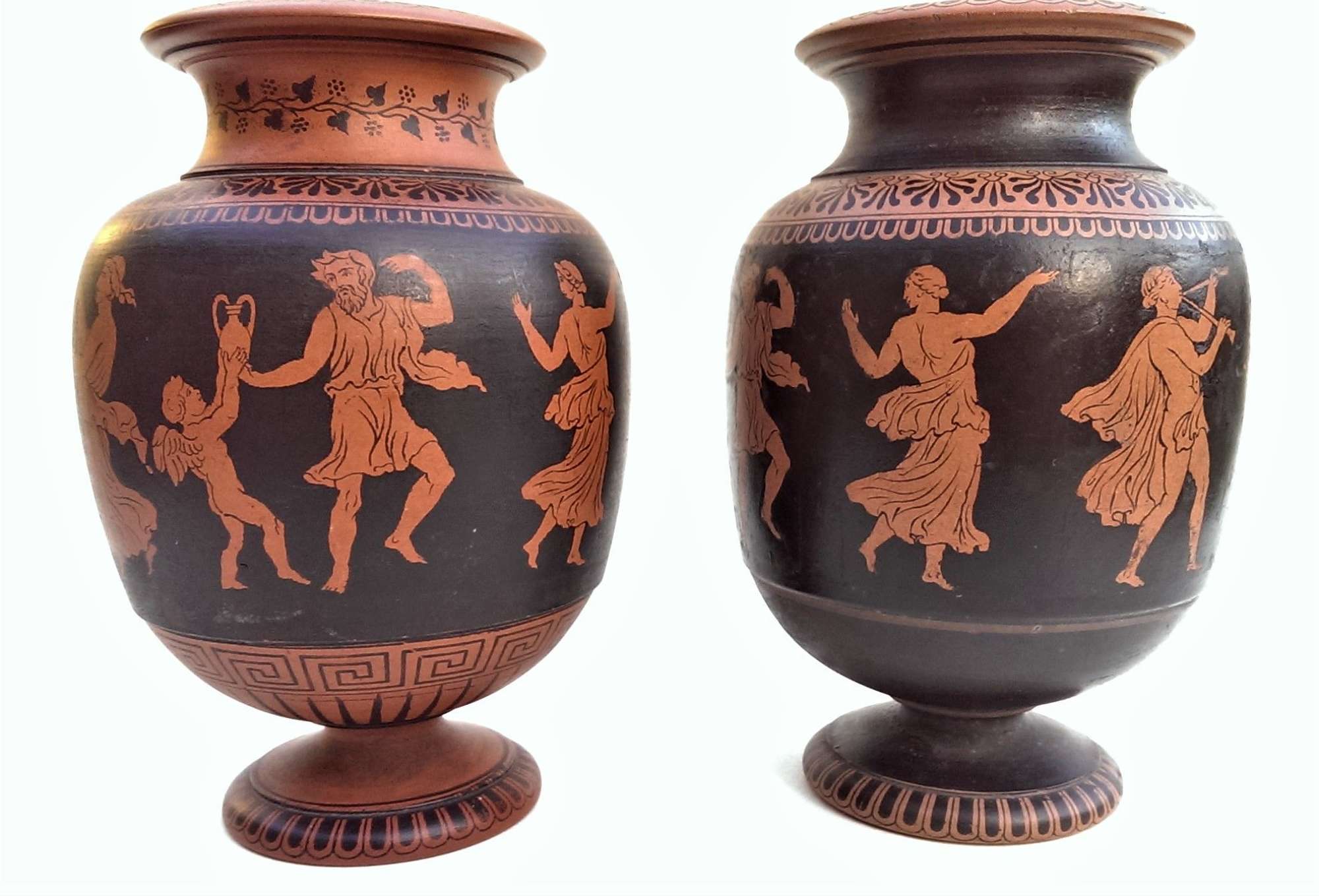Dillwyn's Etruscan Ware, Cambrian Pottery, Swansea
Delivery Quote Request
Please fill in the form below to request a delivery quote from Tregeagle Fine Art.
Contact Tregeagle Fine Art
 Oxfordshire, United Kingdom
Oxfordshire, United Kingdom
Simply fill in the below form to get in touch with Tregeagle Fine Art regarding this item.
About this item
A near pair of lydion shape spill vases
Dillwyn's Etruscan Ware (unmarked)
Cambrian Pottery, Swansea
Circa 1847-1850
Height: 12 cm and 12.2 cm
Each of ovoid, "lydion" shape in red earthenware, transfer-printed and over-painted with black enamel in imitaion of Attic red-figure technique. Flat disk rims, decorated with tongue pattern to the lip, cylindrical necks with a band of lotus and palmette decoration at the shoulders and flared echinus shaped foot with a tongue pattern to rim. The bodies of each with a procession of dancing and instrument playing Bacchantes. One very slightly taller with black enamelling to the neck and foot; the other with bare, red earthenware neck and foot with additional ivy meander to neck, key pattern to the belly and a band of rays above the foot. Both glazed internally, one with slight crystalizing of the internal glaze within the neck.
Though unmarked these spill vases are certainly part of the Cambrian Pottery's output known as 'Dillwyn's Etruscan Ware'. The Cambrian Pottery, under the direction of Lewis Llewelyn Dillwyn (1814–1892), produced a short-lived range of affordable neoclassical wares, based loosely on ancient prototypes. Many of the designs were developed by Lewis Dillwyn's wife Elizbeth ("Bessie"), daughter of the eminent geologist Sir Henry Thomas De la Beche. Bessie Dillwyn obtained inspiration for many of the designs through studying of examples of Greek pottery in the British Museum. The vases here are based on an ancient form of vessel known as a "lydion", which was originally a container for oils or pefume.
Regarding the output of this ware, Ellis Jenkins mentions knowing of "just over a hunded pieces, some of them damaged or restored" and how, of these, only "about half of them" bear any mark. For two similar 'Dillwyn's Etruscan Ware' spill vases of a different, straight-sided shape, but with similarly contrasting decoration, see Victoria & Albert Museum C.39-1939 and C.40-1939 (Presented to the V&A by Miss A. W. Heneage in 1939 and on display in the V&A's Curtain Foundtion Gallery).
Litrature:
For a history of 'Dillwyn's Etruscan Ware' production see Ellis Jenkins 'Dillwyn's Etruscan Ware' pp. 8-19 in "'Gower' (The Journal of the Gower Society)" Volume 21, The Royal Institution, Swansea, 1970.
Provenance:
Private Collection, Pembrokeshire, Wales
Additional Information
10106 (AB-59614)
H: 12cm (4.7")
Victorian (1837 to 1901)
![]() Oxfordshire, United Kingdom
Oxfordshire, United Kingdom

















